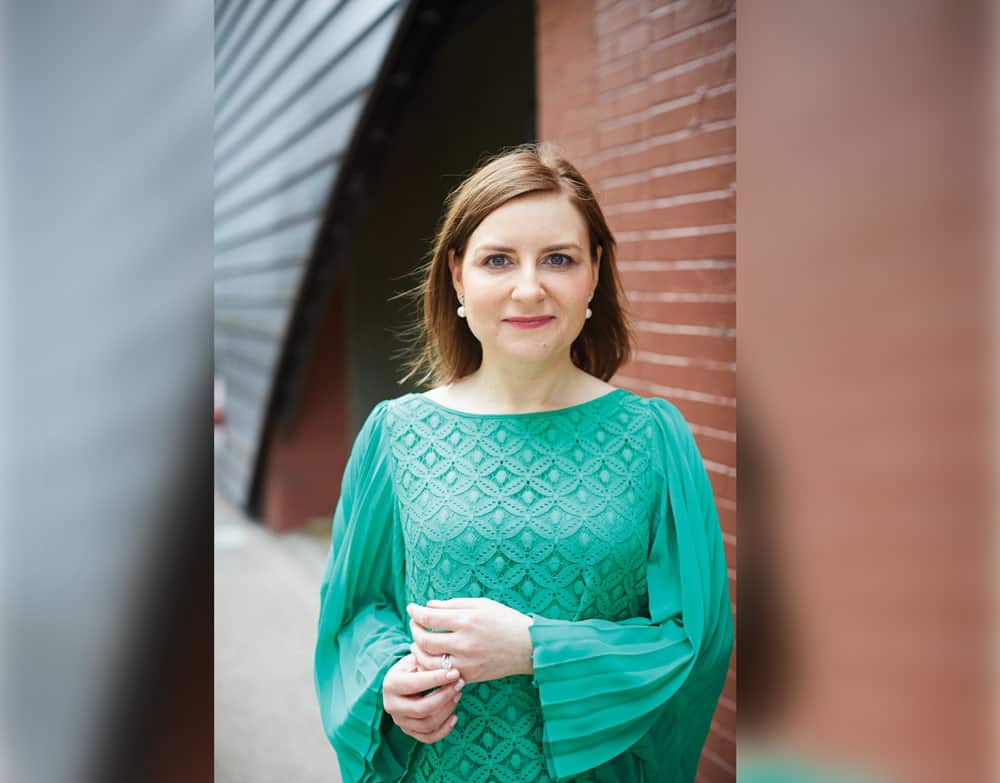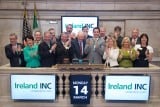Margaret Molloy, CMO, Siegel+Gale
Margaret Molloy, CMO of Siegel+Gale, talks to Ruraidh Conlon O’Reilly about marketing, Irish America and the need to simplify.
Of all the business functions that have been revolutionised by technology in the past 10 or 15 years, perhaps marketing has undergone the most profound change of all. Fast-moving, 24/7, nimble and yet underpinned by servers full of complex data, getting the message across is no longer a matter of booking advertising and waiting a while to see the results – the stakes are higher, the techniques more data-driven.
At the forefront is Margaret Molloy, CMO of strategic branding and design consultancy Siegel+Gale in New York. A proud Irish American, a one-year internship with Enterprise Ireland brought the University of Ulster graduate to the US, where she fell in love with New York. Fast forward a few years and her clients include GE, Hewlett Packard Enterprise, American Express, SAP, Novartis and the NBA.
WHAT A TIME TO BE A MARKETER
“It is a tremendous time to be a marketer, assuming that you want to be a modern marketer, of course,” she enthuses. “Successful CMOs have always been strategic business leaders. While channels have evolved and the pace of business has changed, the need to be strategic and understand the market remains constant. The role of a CMO is to have a strategic outlook and appreciate the dual function of creativity and analysis in the marketing process.
“Perhaps one of the biggest changes affecting the role of a CMO is the shift from storytelling to story-building. The world of branding has evolved from words and pictures to experiences. Today, brands cannot merely broadcast their story – rather, they need to create experiences that consumers want to build on and share.
CHIEF SIMPLICITY OFFICER
“Another change I have observed is the need to simplify. As CMO, I also take the posture of a chief simplicity officer. Today, there are ever-increasing numbers of channels, technologies and marketing techniques. The job of the CMO is to take all of these inputs, isolate what is relevant and drive the right initiatives and the right prioritisation for their company or brand.”
Indeed, Siegel+Gale is known as ‘the simplicity company’ – its approach is that ‘simple is smart’, Molloy says. And you get there by combining clarity and surprise: a clear and transparent message, along with experiences reimagined in useful and distinctive ways.
As CMO, Molloy’s priority is to drive breakthrough marketing that grows the company. “As a builder of high-performance teams, I believe the CMO must set a clear vision for business performance, and once that vision is clear, execution becomes the ultimate differentiator that sets top teams apart from average teams,” she explains.
STAYING ON TOP OF THINGS
Amidst all this change, Molloy has her own approach to staying on top of things. “I am a strategic marketer with a tech DNA,” she says. “My Harvard Business School training ensures that I take a strategic approach to everything I do and that I appreciate the exponential power of networks. My enthusiasm for technology empowers me to stay connected, at scale.
“I am very active on social media, which enables me to stay on top of the news of the day as well as emerging trends. Social media, especially Twitter, is an incredibly useful listening tool – there is a constant stream of conversations about brands on social. Embracing social media, especially LinkedIn, is key to building and maintaining my network.
… isolate what is relevant and drive the right initiatives and the right prioritisation
“My perspective is that a CMO needs to look outside their company to gain perspective and to identify what peers are doing in other sectors. I spend time with clients and other CMOs to understand their business issues. I am active on the conference scene – this is one of the best ways to stay in touch with the challenges and opportunities in the marketing industry. I also convene CMO roundtables in cities around the world to talk specifically with CMOs on the future of branding.”
Since Molloy began her career in technology, she has had a keen interest in the startup community and recognises the value of cross-pollinating ideas between emerging and established companies. This led to a passion for emerging technologies and the implications for brands.
Molloy has noticed how marketers have been making the case for greater recognition within their companies, and among their boards. “Credibility with the board has been a nagging concern for CMOs – the ability to convince the C-Suite that marketing matters, and to demonstrate that CMOs are business leaders, is at the core of the issue.
“I have observed that marketing leaders who exhibit the following characteristics gain appreciation from boards: ability to quantify the impact of marketing on business performance, a strategic outlook on the future of their markets, and the capacity to go beyond marketing jargon to speaking about business drivers. “Ultimately, boards appreciate CMOs who drive business performance and shareholder value. We must be business leaders, not merely marketing leaders.”
… finding the right balance between splitting my time on strategic and executional initiatives
IRISH INSPIRATIONS
Molloy grew up on a dairy farm in Co. Offaly as the eldest of six children, a background that has inspired how she approaches her work. “From an early age I came to understand the relationship between keeping promises, commitment to hard work and earning a reputation,” she says. “Much later, I learned that these are the attributes of a successful brand.”
Her Irish identity has played an important role too. “I consider the defining characteristics of Irish people to be pragmatism, curiosity and storytelling. We are creative problem-solvers who understand the power of building enduring relationships and influence. I am proud to use these traits in my work everyday. And when I inevitably fall down from time to time, a dose of Irish humility goes a long way.
“For example, I’m deeply curious about how people work (organisational perspective), how they buy (customer perspective) and how they interact with each other (engagement perspective).”
Now settled in the New York she loves, she is a proud member of the city’s vibrant Irish-American community. There’s a lot going on, and she supports Irish American events when she can – she’s a board member of Origin Theatre, a cross-cultural theatre company dedicated to the cultivation, development, and interpretation of new and emerging European playwrights. “Something that continuously impresses me is the talent, drive and professionalism of Irish graduates who move to New York in search of opportunities,” she says.
Beyond marketing, she also has a huge interest in fashion and design. In March she launched the #WearingIrish initiative, encouraging everyone to wear Irish fashion for the month and to post their pictures on social media, as she herself did. “The #WearingIrish campaign achieved outstanding publicity for Irish design. My vision is for #WearingIrish to be an annual movement and I welcome everyone to get involved,” she says.
Although change is manifold, marketers cannot lose sight of how ultimately marketing is about satisfying customer needs in a profitable manner
As for the future of marketing, it sounds like there will be no let-up in the pace of change. “In the short term, I predict that simplify will be the new disrupt,” she says. “Savvy marketers will focus on creating simple brand experiences and ensuring that filters down through all facets of the customer journey.
“In the medium term, we will see employees play an increasingly important role as brand champions. Increasingly a brand’s success is based on the experience delivered to customers. We cannot underestimate the role employees play in keeping and delivering on the brand promise.
“In the long term, we will see brands continue to reinvent their relevance by forming alliances with other companies. Strategic partnerships enable brands to create new ecosystems. Although change is manifold, marketers cannot lose sight of how ultimately marketing is about satisfying customer needs in a profitable manner.”
REAL TALK: QUICK-FIRE QUESTIONS
Q: What is the hardest part of your role as CMO?
The hardest part of my job as a CMO is finding the right balance between splitting my time on strategic and executional initiatives. I liken the CMO time-management challenge to being at a rousing party and deciding how much time to spend on the dancefloor versus the balcony.
Specifically, the CMO needs to designate the right resources to executing marketing programmes with the marketing team and articulating a vision for the future of the company.
Q: How do you define your brand?
As a professional, it’s imperative to understand your point of differentiation. For me, my defining characteristics are gravitas, grace, and grit.
My gravitas ties to building credibility through knowledge, my grit is a product of being unstoppable in my pursuits, and my grace reflects an appreciation for the contributions of others.





